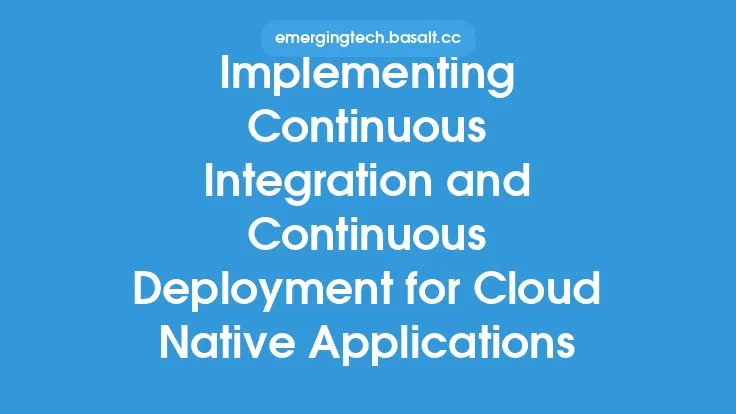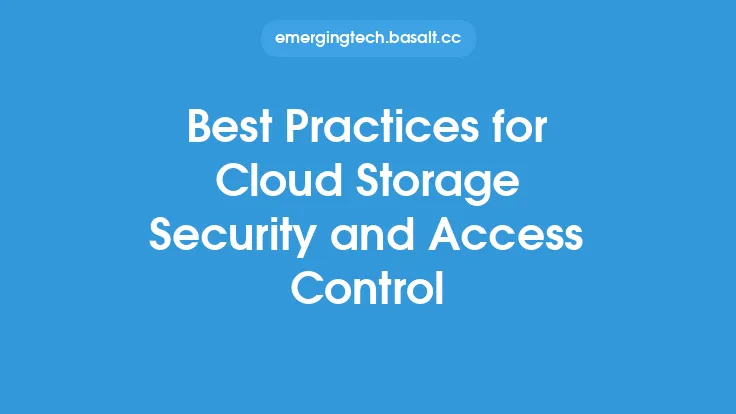Deploying and configuring cloud resources securely is a critical aspect of cloud computing. As more organizations move their infrastructure and applications to the cloud, the importance of secure cloud deployment and configuration cannot be overstated. In this article, we will explore the best practices for secure cloud deployment and configuration, providing a comprehensive guide for organizations to ensure the security and integrity of their cloud resources.
Introduction to Secure Cloud Deployment
Secure cloud deployment begins with a thorough understanding of the cloud service provider's (CSP) security controls and features. Organizations should carefully evaluate the CSP's security posture, including their compliance with industry standards and regulations, such as SOC 2, ISO 27001, and PCI-DSS. It is also essential to understand the shared responsibility model, which outlines the security responsibilities of both the CSP and the customer. By understanding these security controls and features, organizations can ensure that their cloud resources are deployed and configured securely.
Secure Cloud Configuration Best Practices
Secure cloud configuration is critical to preventing unauthorized access and ensuring the integrity of cloud resources. The following best practices should be implemented:
- Use secure protocols for data transmission: Use secure protocols such as HTTPS, SFTP, and SSH to encrypt data in transit.
- Configure network security groups: Configure network security groups to control inbound and outbound traffic to cloud resources.
- Implement access controls: Implement access controls, such as role-based access control (RBAC), to restrict access to cloud resources.
- Use secure storage: Use secure storage options, such as encrypted storage, to protect sensitive data.
- Regularly update and patch cloud resources: Regularly update and patch cloud resources to prevent exploitation of known vulnerabilities.
Cloud Resource Provisioning and Management
Cloud resource provisioning and management are critical aspects of secure cloud deployment and configuration. The following best practices should be implemented:
- Use automation tools: Use automation tools, such as Terraform or CloudFormation, to provision and manage cloud resources.
- Implement resource tagging: Implement resource tagging to track and manage cloud resources.
- Use cost estimation tools: Use cost estimation tools to estimate the cost of cloud resources and prevent unexpected costs.
- Implement resource monitoring: Implement resource monitoring to detect and respond to security incidents.
Identity and Access Management in Cloud Deployment
Identity and access management (IAM) is a critical aspect of secure cloud deployment and configuration. The following best practices should be implemented:
- Use IAM services: Use IAM services, such as AWS IAM or Azure Active Directory, to manage access to cloud resources.
- Implement least privilege access: Implement least privilege access to restrict access to cloud resources.
- Use multi-factor authentication: Use multi-factor authentication to prevent unauthorized access to cloud resources.
- Regularly review and update IAM policies: Regularly review and update IAM policies to ensure that access to cloud resources is restricted to authorized users.
Cloud Security Assessment and Compliance
Cloud security assessment and compliance are critical aspects of secure cloud deployment and configuration. The following best practices should be implemented:
- Conduct regular security assessments: Conduct regular security assessments to identify vulnerabilities and weaknesses in cloud resources.
- Implement compliance frameworks: Implement compliance frameworks, such as NIST or ISO 27001, to ensure that cloud resources are compliant with industry standards and regulations.
- Use cloud security assessment tools: Use cloud security assessment tools, such as CloudMapper or Scout2, to identify vulnerabilities and weaknesses in cloud resources.
- Regularly review and update compliance policies: Regularly review and update compliance policies to ensure that cloud resources are compliant with industry standards and regulations.
Conclusion
In conclusion, secure cloud deployment and configuration are critical aspects of cloud computing. By following the best practices outlined in this article, organizations can ensure the security and integrity of their cloud resources. It is essential to understand the CSP's security controls and features, implement secure cloud configuration best practices, use automation tools for cloud resource provisioning and management, implement IAM services, and conduct regular security assessments and compliance reviews. By taking a proactive approach to secure cloud deployment and configuration, organizations can prevent security incidents and ensure the confidentiality, integrity, and availability of their cloud resources.





